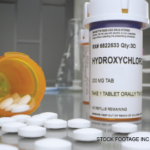Discouraging the inappropriate use of antibiotics, naturopathic remedies, narcotics and MRIs might be excellent advice, but these same recommendations might conflict with the patient’s preconceived goals and, thus, result in reduced satisfaction. In 2001, Kendrick and colleagues published a landmark study on the effects of randomly obtaining X-rays to evaluate patients with low back pain.8 The study involved more than 400 subjects. Eighty percent of subjects wanted an X-ray, and those who received an X-ray were more satisfied with their care after nine months. But those who received an X-ray also experienced more severe pain, a longer duration of pain and more disability. They also had more visits to a physician. Satisfaction was, thus, inversely related to outcome.
Fenton and colleagues reached a similar, but even more disturbing, conclusion in their 2012 publication that followed a large cohort of patients over time, collecting data from the Medical Expenditure Panel Survey.9 Those who were most satisfied with their doctor were also most likely to die.
To be sure, some studies describe positive effects from patient satisfaction. For example, Glickman and colleagues found that patients who were more satisfied with their care for an acute myocardial infarction were less likely to die as an inpatient.10 But this same study found that nurses were the most influential factor in determining satisfaction. Interestingly, satisfaction with visiting hours was also an important parameter that correlated with overall satisfaction.
Practicing medicine should not be a popularity contest. Our role as caregivers is to protect the health of our patients.
One of the worst aspects of using satisfaction as a measure of quality is its effect on physician morale. There’s an old joke: What do you call the student who graduates last in the medical school class? Answer: a doctor. The joke requires an update. What do you call 417,000 physicians in the U.S.? Answer: substandard, because they represent the number below the 50th percentile in patient satisfaction.
Personally, if I had seen my ophthalmology scores only, I would have spent months pondering the reasons for this failing grade. The rheumatology scores helped me appreciate how flawed the measurements are.
One suggestion is that scores should not be scaled by percentile. A physician with a 90% approval rating should be pleased, just as a restaurant, grocery store, airline or cobbler would be pleased. But for physicians, 90% approval may well fall below the 50th percentile. This is grossly unfair.
Patient-Centered Practice
I do not favor abandoning patient satisfaction completely as a metric for care. Our role as caregivers is to protect the health of our patients. Knowing that patient satisfaction will be assessed serves to remind us of this patient-centered mission. But if the motivation to measure satisfaction is to provide better care, what is the motivation to provide a better metric?

